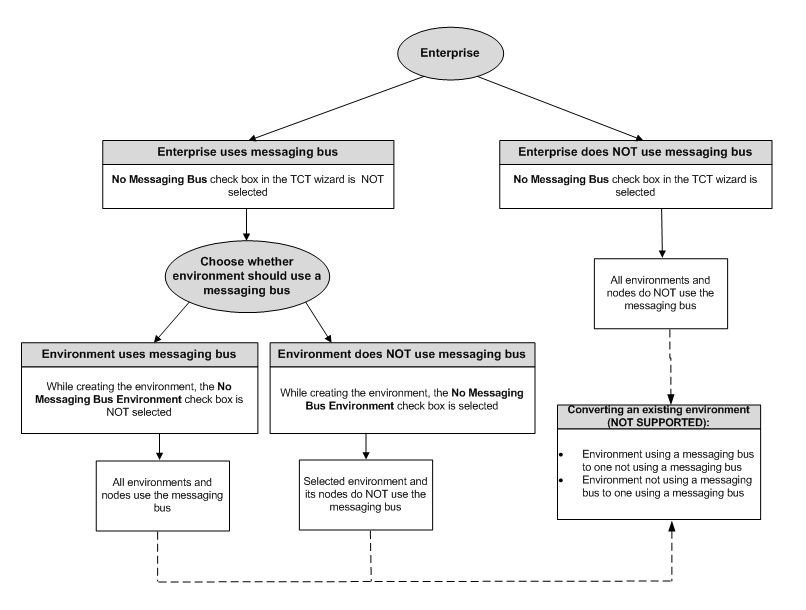Determining Whether a New Environment should use a Messaging Bus
When creating an enterprise, if you configured it to use a messaging bus, you can further decide whether new environments in the enterprise should use the messaging bus or not.
You can create an environment that:
- uses the messaging bus or
- does not use the messaging bus
If you decide to create an environment that does not use the messaging bus, any node created under the environment does not use a messaging bus either.
For more information about creating an environment, see Creating an Environment.
The following illustration summarizes the messaging bus configuration for an environment:
Constraints
Keep the following constraints in mind when determining whether an environment needs a messaging bus or not.
- After you configure an environment to use or not to use a messaging bus, you cannot switch to the other configuration. For example, if an environment does not use a messaging bus, you cannot switch to using a messaging bus and vice versa.
- For an environment that does not use the messaging bus, if an application is deployed on a node, the application entities (components, bindings, services, and references) cannot be distributed to any other node. However, the application as a whole can be distributed to other nodes.
- For an environment that does not use the messaging bus, you can still deploy applications that use a virtualization-related policies which rely on the messaging bus. However, the policies may not be honored at runtime. The following warning is displayed during the deployment of the application:
See Also:
- Messaging Bus Settings of an Enterprise
- Determining Whether an Enterprise Uses a Messaging Bus
- Configuring an Enterprise to Stop Using a Messaging Bus
- Creating an Environment
- Determining Whether an Environment Uses a Messaging Bus
- Determining Whether a Node Uses a Messaging Bus
- Determining Whether an Application Uses a Messaging Bus
Copyright © 2022. Cloud Software Group, Inc. All Rights Reserved.


